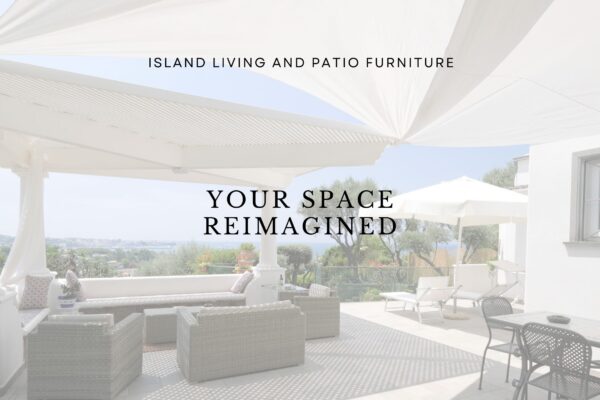What drainage and ventilation considerations are essential for outdoor living spaces in South Florida’s climate?
What Drainage And Ventilation Considerations Are Essential For Outdoor Living Spaces In South Florida’S Climate?: Proper water flow and air circulation are crucial for creating comfortable outdoor areas in the tropical climate of West Palm Beach, FL
At Island Living and Patio Furniture in West Palm Beach, FL, we understand the importance of addressing drainage and ventilation concerns in outdoor living spaces in South Florida’s unique climate. Our team is well-equipped to provide expert solutions tailored to your specific needs, ensuring that your outdoor area remains functional and enjoyable.
Key Drainage Solutions for Outdoor Spaces in West Palm Beach, FL
When it comes to creating a successful outdoor living space in West Palm Beach, FL, proper drainage is crucial to prevent water accumulation and potential damage. Here are some essential considerations to keep in mind:
- Utilize permeable materials for hardscaping to allow water to seep into the ground.
- Install French drains or dry wells to redirect excess water away from your outdoor space.
- Consider grading your landscape to ensure water flows away from your home and outdoor living areas.
Furthermore, proper ventilation is key to maintaining a comfortable and healthy outdoor environment. Here are some ventilation considerations to enhance your outdoor living space:
- Strategically place outdoor fans or ceiling fans to improve air circulation.
- Install pergolas or shade structures to provide relief from the sun and promote airflow.
- Consider incorporating natural elements like plants and trees to create a refreshing atmosphere.
Island Living and Patio Furniture 1700 Upland Rd, West Palm Beach, FL 33409, (561) 683-7373
For more information – Click Here
Understanding Ventilation Needs in South Florida’s Climate
When considering outdoor living spaces in South Florida, it is crucial to pay attention to air circulation and flow. Adequate ventilation not only enhances comfort but also plays a significant role in maintaining a healthy environment. Here are some key factors to keep in mind:
- Utilize natural breezes to promote airflow and reduce the reliance on mechanical ventilation systems.
- Strategic placement of landscaping elements can help channel airflow, creating pockets of coolness.
- Install ceiling fans or portable fans to supplement ventilation on still days.
Proper ventilation is especially vital in the humid climate of South Florida, as it helps prevent moisture buildup that can lead to mold and mildew growth. By allowing air to circulate effectively, you can also mitigate the risk of heat trapping, ensuring a more comfortable outdoor experience.
Expert Tips for Optimal Ventilation:
- Consider installing louvered pergolas or adjustable shades to regulate airflow and sunlight exposure.
- Choose materials that are breathable and allow for natural ventilation, such as bamboo or rattan furniture.
While it may be tempting to enclose outdoor spaces for protection from the elements, it is essential to strike a balance between shelter and ventilation. Incorporating these considerations into your outdoor design can lead to a space that is not only functional but also harmonious with South Florida’s unique climate.
Designing Patio Areas with Proper Water Management
Water management is a crucial aspect to consider when designing outdoor living spaces in South Florida. In this climate, heavy rainfall and humidity can pose challenges for maintaining a functional and aesthetically pleasing patio area. Here are some essential considerations to ensure effective drainage and ventilation:
- Utilize permeable paving materials such as gravel, permeable concrete, or porous pavers to allow water to drain naturally into the ground.
- Install a French drain system around the perimeter of the patio to redirect excess water away from the area.
Ventilation is equally important to prevent moisture buildup and mold growth in outdoor spaces. Proper airflow can also help regulate temperature and create a more comfortable environment for outdoor activities.
- Strategic placement of ceiling fans or outdoor misting systems can enhance ventilation and create a pleasant breeze.
- Incorporate louvered pergolas or adjustable awnings to control sunlight exposure and airflow as needed.
Additionally, integrating a rainwater harvesting system can provide a sustainable water source for irrigation purposes while helping to manage excess water during heavy rain events. By implementing these water management strategies, you can optimize the functionality and longevity of your outdoor living space in South Florida’s unique climate.
Enhancing Outdoor Comfort through Proper Airflow in West Palm Beach
When creating outdoor living spaces in the vibrant climate of West Palm Beach, ensuring adequate airflow is crucial for maintaining a comfortable and enjoyable environment. Here are some insightful considerations to optimize ventilation and drainage:
- Strategic Placement of Fans: Utilize ceiling fans or portable fans to circulate air effectively and create a cooling breeze, especially during humid days.
- Natural Ventilation: Incorporate architectural features such as louvered windows, pergolas, or open pavilions to encourage natural airflow and reduce the reliance on mechanical systems.
- Greenery Integration: Planting trees, shrubs, and vines strategically around the outdoor space can act as natural windbreakers, enhancing airflow while providing shade and aesthetic appeal.
Furthermore, implementing a combination of shade structures and water features can help regulate temperatures and create a more refreshing atmosphere. By combining these elements thoughtfully, you can maximize outdoor comfort and enjoyment, even in the warmest months.
Strategies for Managing Humidity in Outdoor Living Spaces
When creating outdoor living spaces in South Florida, it is essential to consider effective strategies for managing humidity. High humidity levels can impact the comfort and usability of these areas. Here are some insightful tips to help you combat humidity-related issues:
- Utilize natural ventilation techniques such as strategic placement of windows, doors, and vents to promote air circulation.
- Install ceiling fans or portable fans to enhance air movement and create a cooling effect.
- Consider incorporating shading elements like pergolas, awnings, or umbrellas to reduce direct exposure to the sun and minimize humidity buildup.
Additionally, selecting appropriate materials for outdoor furniture and decor can make a significant difference in managing humidity levels. Opt for materials that are resistant to moisture and mold growth, such as teak, aluminum, or synthetic wicker.
- Regularly inspect and maintain your outdoor drainage systems to prevent water accumulation, which can contribute to high humidity levels.
- Invest in a dehumidifier specifically designed for outdoor use to effectively reduce excess moisture in the air.
By implementing these proactive strategies, you can create an outdoor living space in South Florida that is not only aesthetically pleasing but also comfortable and enjoyable year-round.
Enhancing Outdoor Living Spaces with Effective Drainage Systems
When it comes to optimizing the functionality and appeal of outdoor living areas, striking a harmonious balance between aesthetics and efficient drainage systems is paramount. In the vibrant climate of South Florida, where heavy rains and high humidity are common occurrences, implementing robust drainage solutions becomes essential to safeguarding the longevity and usability of these spaces.
- Utilize permeable materials: Opt for materials such as gravel, pavers, or permeable concrete to allow water to infiltrate the ground naturally, preventing stagnant pools and potential flooding.
- Strategic landscaping: Incorporate sloping techniques in your landscaping design to direct water away from gathering areas towards designated drainage points.
Moreover, integrating innovative drainage features like French drains, trench drains, or catch basins can efficiently manage excess water flow while seamlessly blending with the overall design scheme. By strategically concealing these drainage elements within the landscape, you can maintain a cohesive aesthetic while ensuring optimal functionality.
- Consider the elevation: Assess the natural slope of the land to determine the most effective placement for drainage systems, ensuring proper water runoff and prevention of erosion.
- Proper maintenance: Regularly inspect and clean drainage components to prevent clogging and ensure optimal performance during heavy rainfall or seasonal changes.







